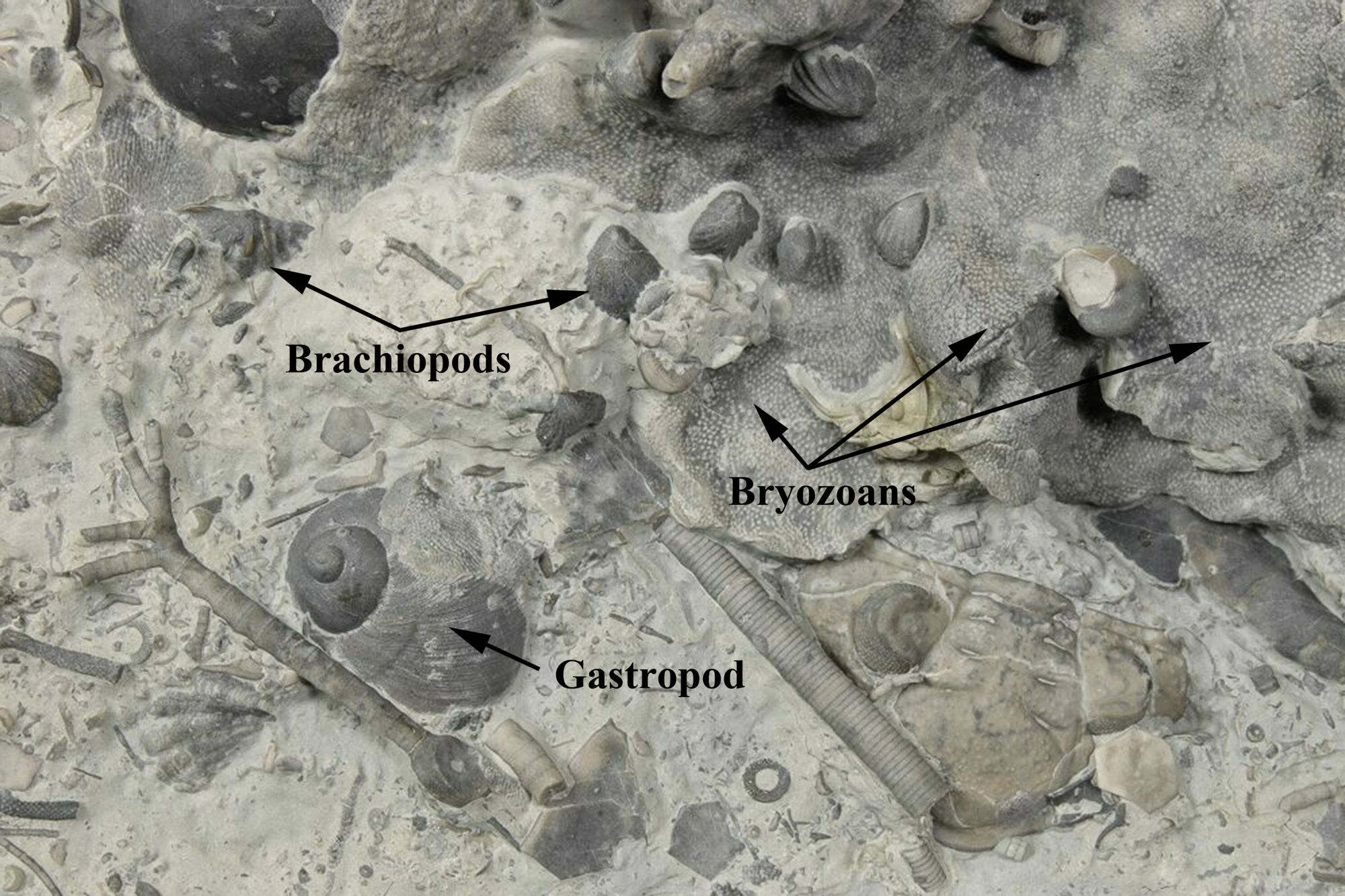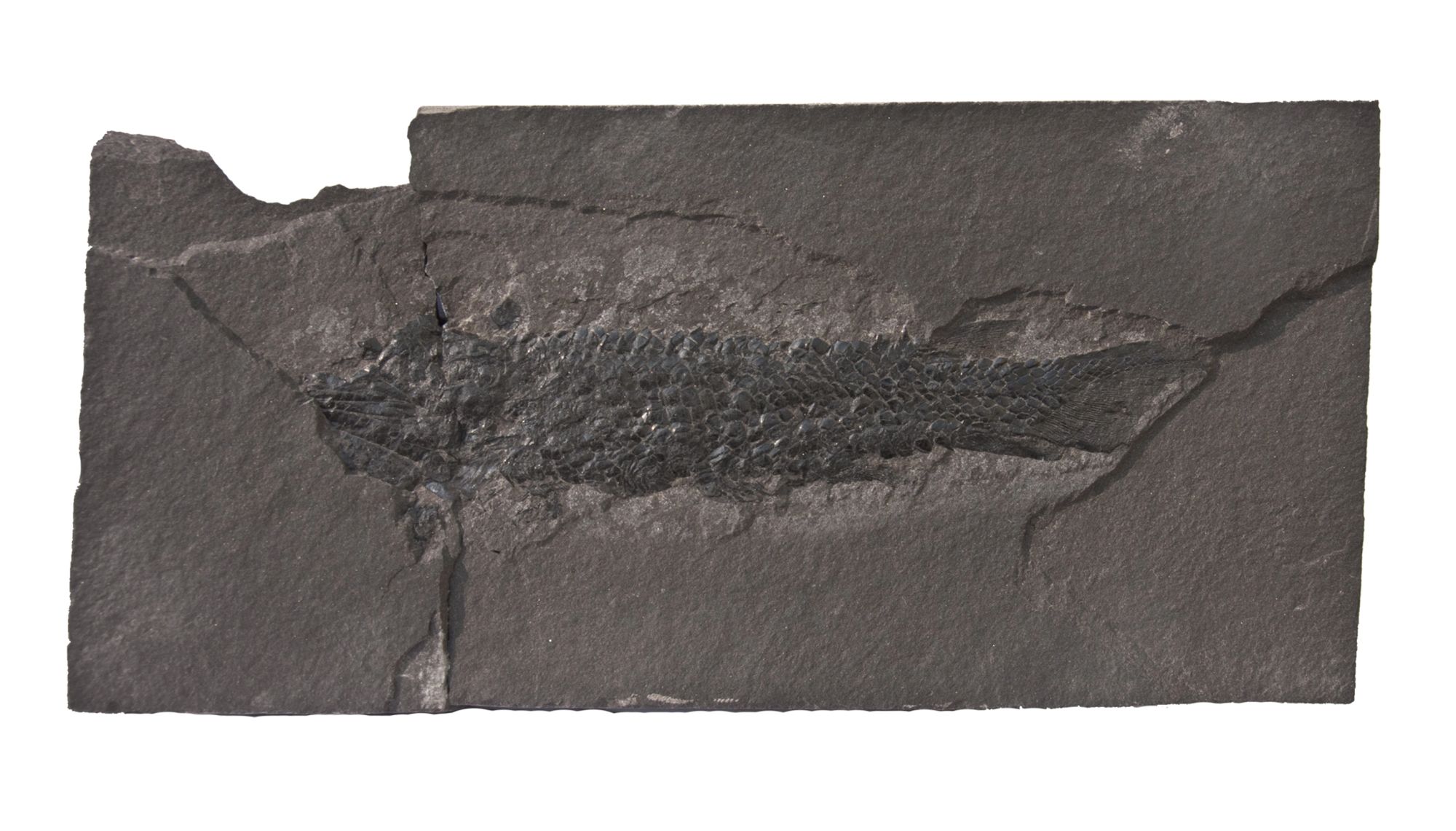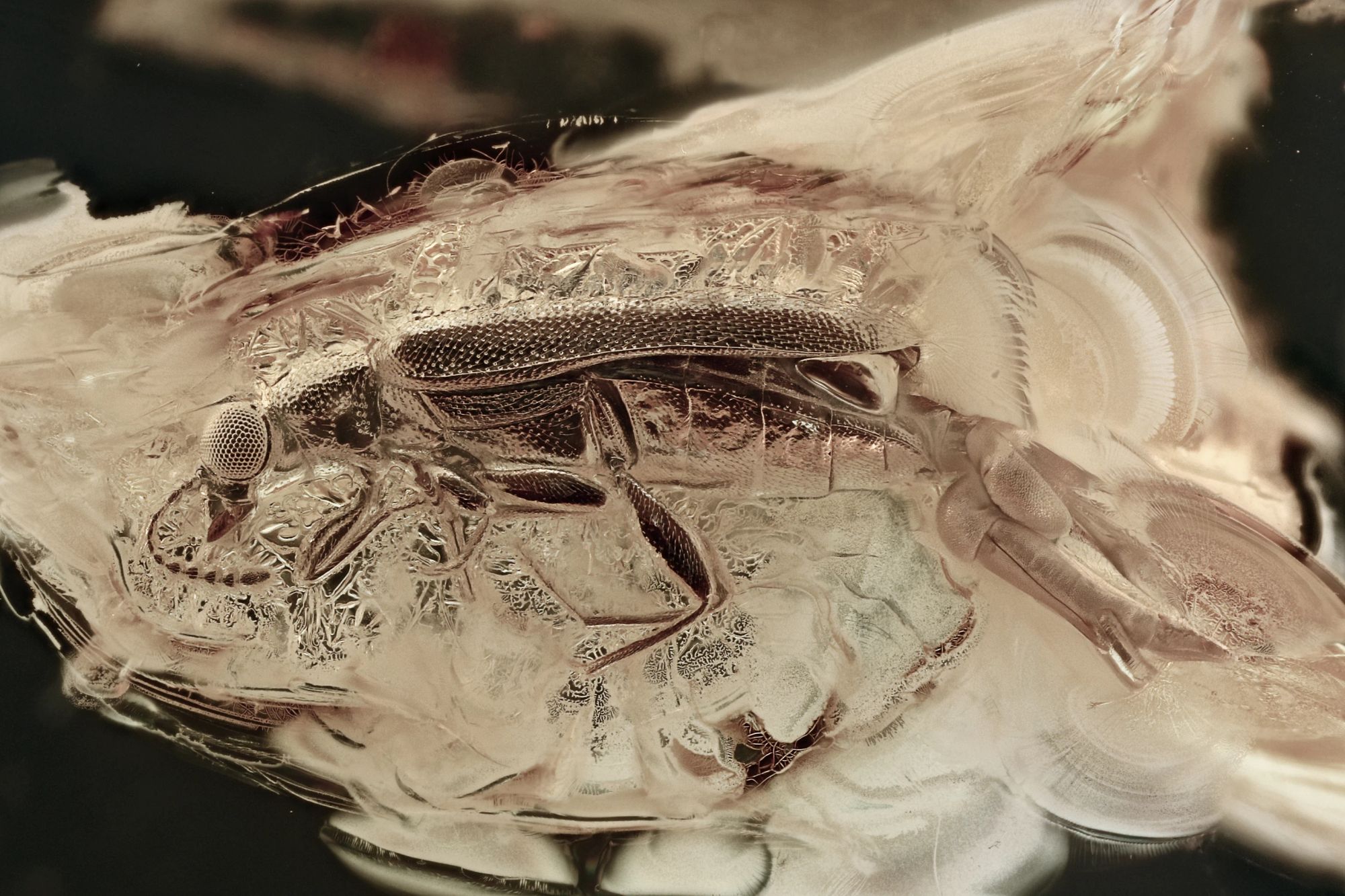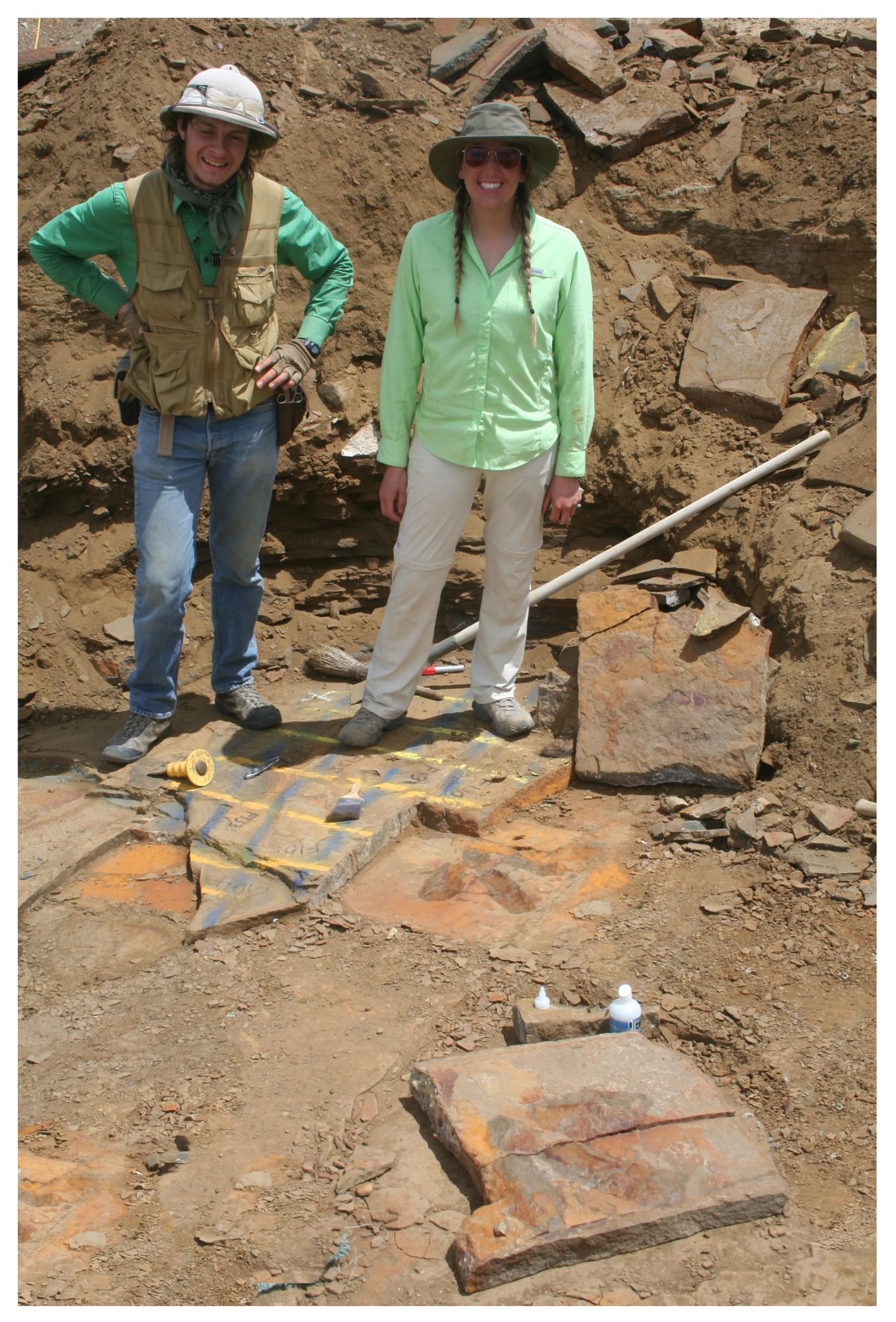
During the Silurian Period, 430 million years ago, equatorial reef systems developed in the seas. The reefs were home to all kinds of invertebrates and among the most plentiful were brachiopods, bryozoans, and gastropods, seen in this specimen in our collection.

This fossil is of a lobed-finned fish named Osteolepsis macrolepidotus and was found in Scotland. The Devonian Period (named after fossils first found in Devon, England), is known as "The age of fishes" and was fish transformed into three major groups: lobe-finned, ray-finned, and sharks.

Millions of years ago during the Silurian period, the Sahara Desert was a shallow sea full of aquatic animals like crinoids. Don’t be fooled! Crinoids are commonly called "sea lilies" but they aren't plants! They are echinoderms, like starfish and sea urchins, and many species are still alive today!

7,000 year old bison teeth found at the Cherney Bison Site. For a donation of $300 or more you can get your very own bison tooth as a thanks for helping fund the excavation of this incredibly unique fossil site in Coon Rapids, Minnesota.

A flower beetle in baltic amber. We hope to raise money for a museum microscope so kids can examine insect specimens like this one!

Adult Mammoths had one natural enemy–Neanderthals. This Neanderthal scraper in our collection was used for preparing large mammoth hides. The Mousterian style of manufacture reveals it to be 120,000-200,000 years old.

7,000 year old bison teeth found at the Cherney Bison Site. For a donation of $200 or more you can get your very own bison tooth as a thanks for helping fund the excavation of this incredibly unique fossil site in Coon Rapids, Minnesota.

Footprint fossils are important because they reveal the size of the animals that made them, their movement, and animal behavior. The 44,000 pounds of footprints collected at this site in Wyoming tell the story of tyrannosaurs ambushing a herd of hadrosaurs as they approached the river to drink.


